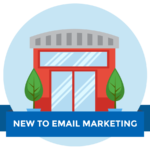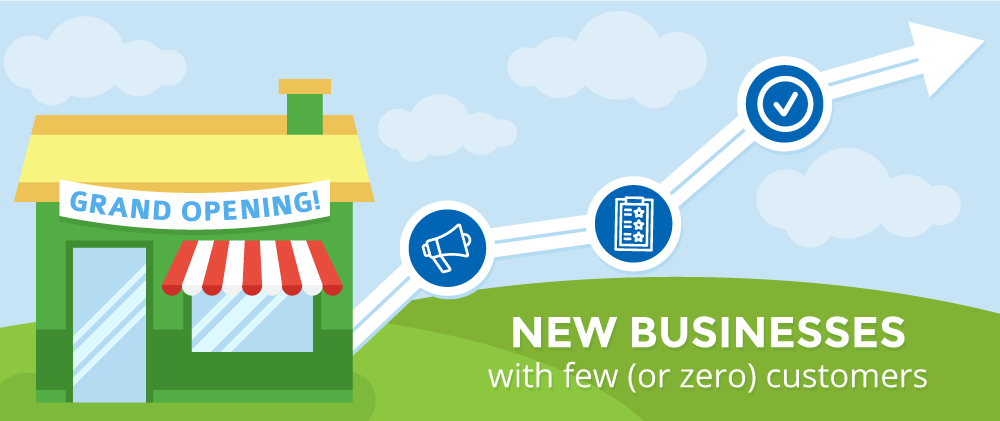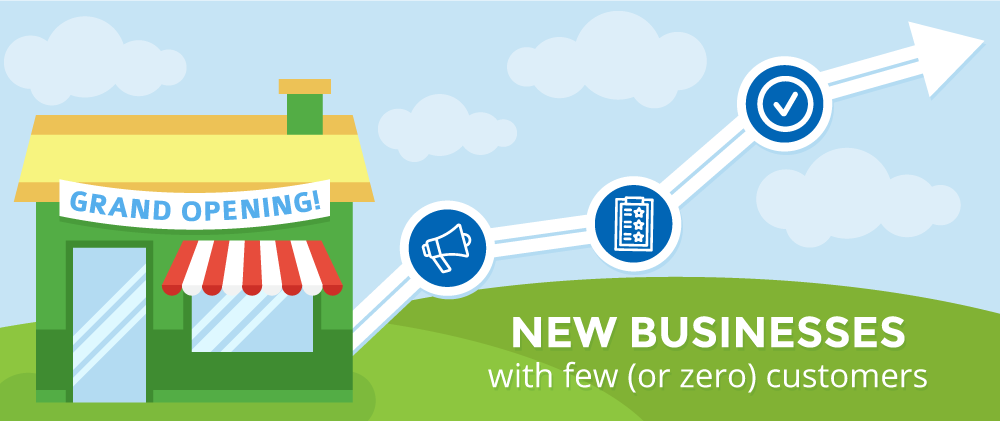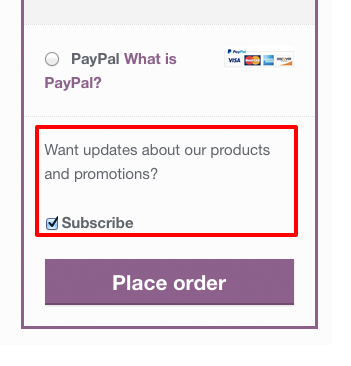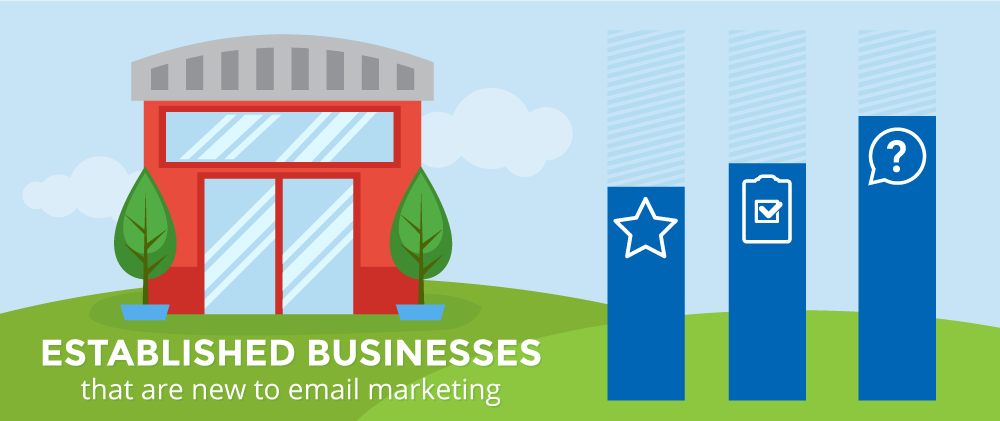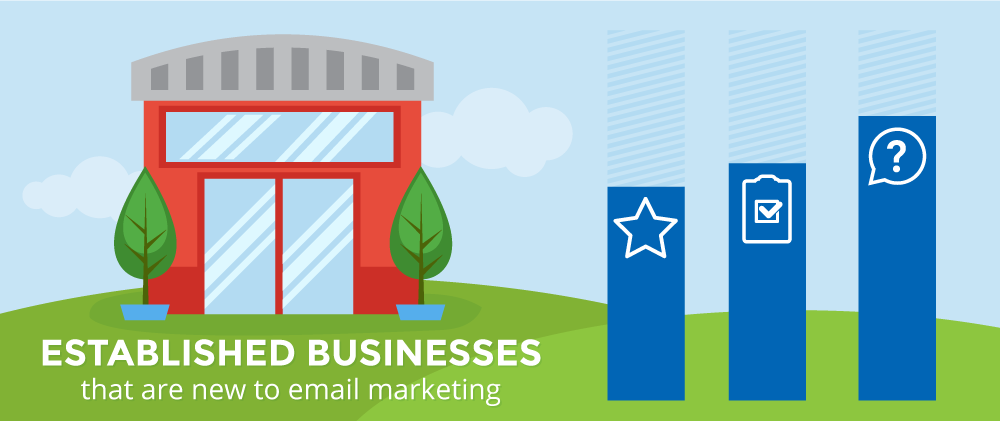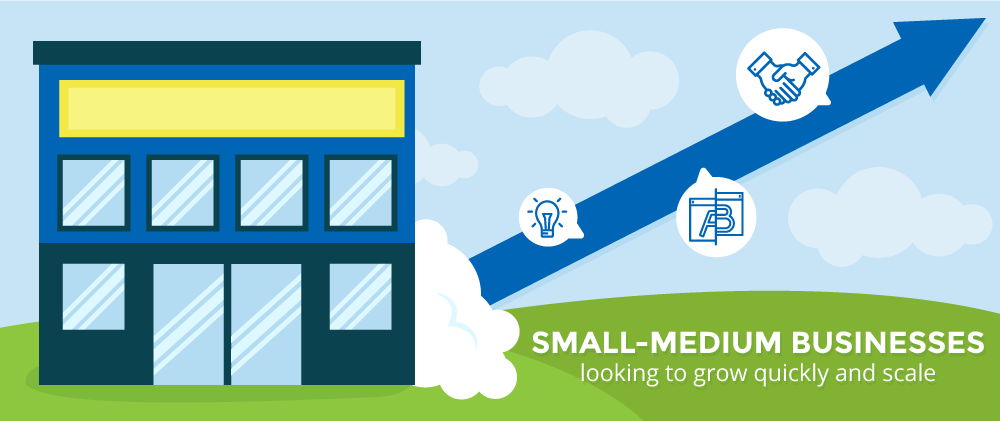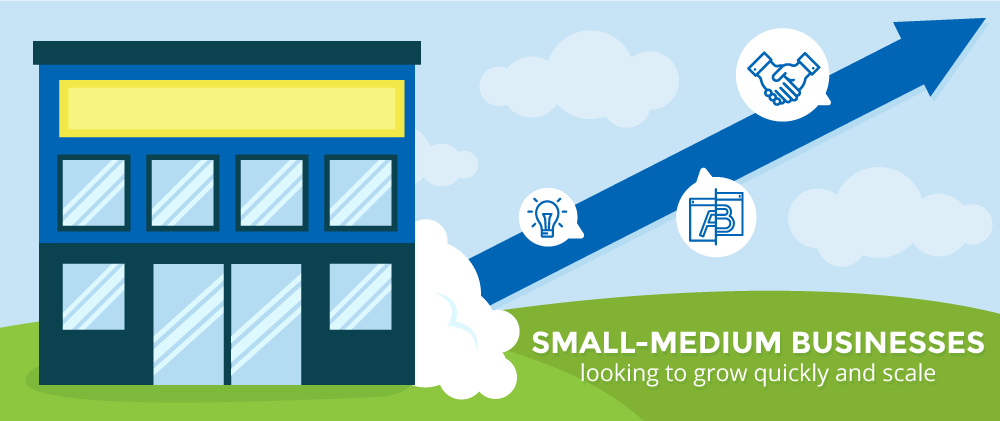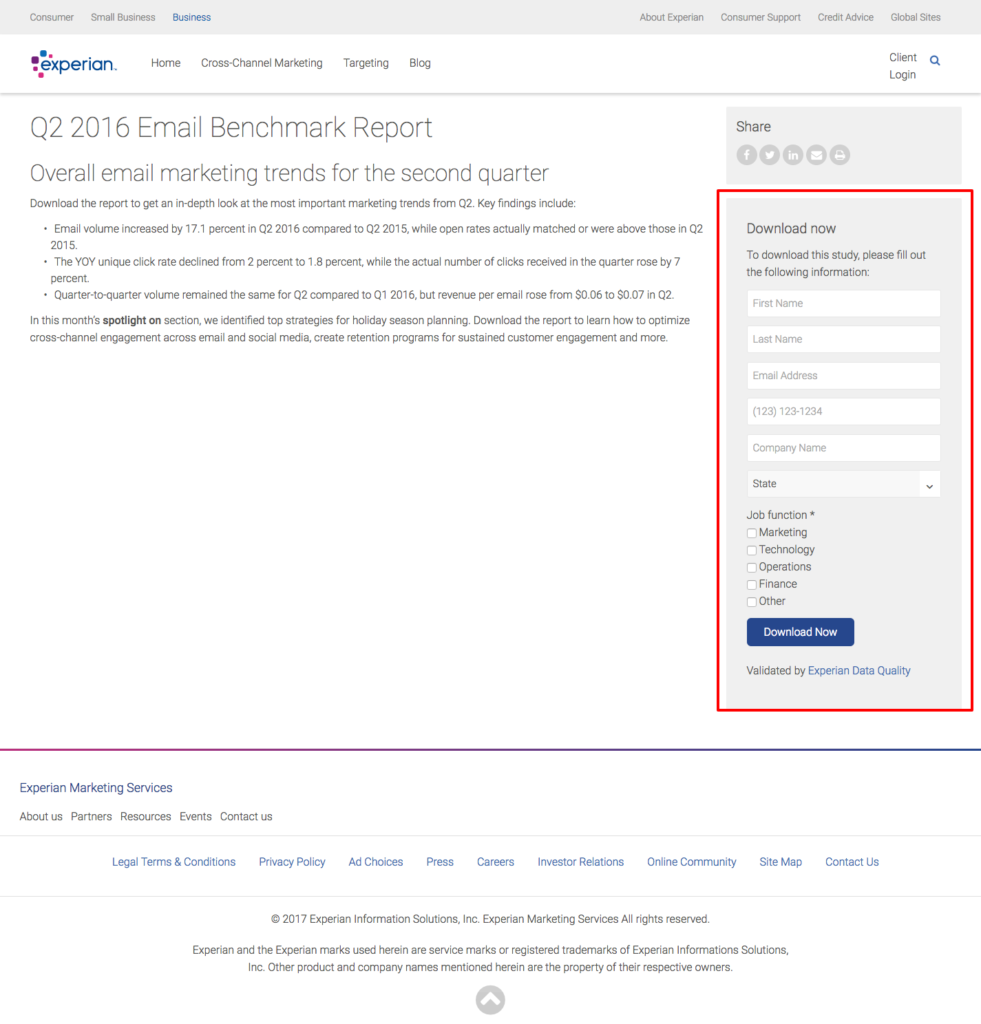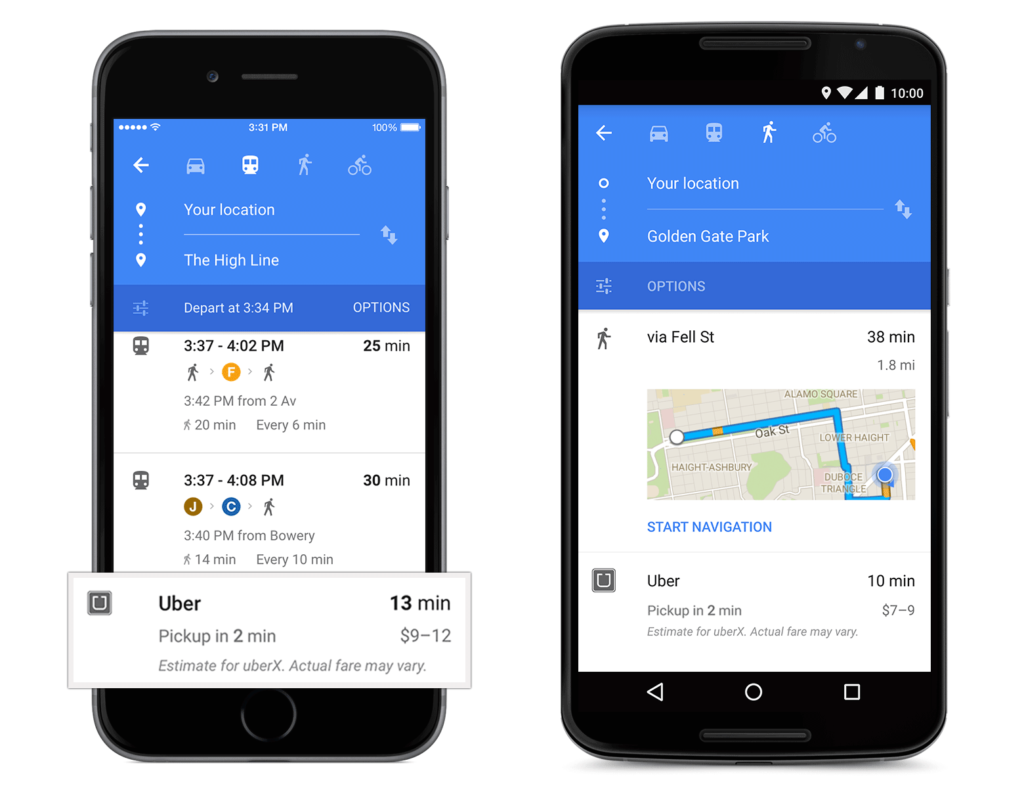

If you’re in marketing, you’ve probably found yourself wishing for a magic solution to quickly and easily grow your email list at some point in your career.
This makes sense because email marketing is proven to be one of the most important and effective tools1 for communicating with customers. Because of this, many people make the mistake of contacting new “subscribers” by using purchased or shared email lists.
The problem is that these lists are a waste of your two most valuable resources: time and money.
In this post, I’ll give you the inside scoop on why buying email lists damages your business (rather than helping it). Plus, I’ll break everything down based on your business type and give you a real, actionable 30-day plan to sustainably grow your list the right way.
The 3 Businesses that Should Never Buy Email Lists
1. New businesses
New businesses are especially susceptible to the temptation of purchased lists.
This is because you have no contacts to start with, and all you can think about is getting the word out as fast as possible. Buying an email list with hundreds of potential customers seems like the perfect solution, right?
There’s only one problem — you don’t know anything about the people on the list you’re buying. You also have no way of knowing if they are interested in your product.
Hint: they probably aren’t.
At least not when it is being offered through an unsolicited marketing email.
The point of having a business is that you provide value to your customers by solving a problem. But, if you want to solve a problem for someone, you need to know who they are and what problems they are having. This is not possible with a purchased list, and it’s why you can’t take the easy way out.
As you build your email list for your new business, it is essential to find people who are genuinely interested in what you’re offering. This will give you the most ROI and guarantee that you aren’t wasting your resources.
So, how exactly do you do this? Here are some things to focus on over the next 30 days to grow your list organically and sustainably:
30-day growth plan for new businesses:
- Build a reputation (online and/or offline) that draws people back to your website
- Get listed on relevant review or search sites (Yelp, Google Maps, and sites specific to your industry)
- Demonstrate your company’s value by answering relevant questions for your customers. This could be online on sites like Quora, or in person at networking or industry events.
- Sponsor or speak at events in your industry.


- Focus on your first conversion step: converting anonymous visitors to known prospects. Start by offering something of value to get visitors to tell you who they are. For example, try offering a one-time piece of gated content. (This could be followed by a full opt-in for your newsletter.)
- Add an opt-in to checkout pages (for e-commerce) to allow customers to subscribe when they make a purchase.
- Add popups and subscribe forms on every page of your site.
Next step: Offer a referral marketing program to leverage current customer base for more growth.
2. New to Email Marketing
So you decided to try email marketing for your business. Maybe it’s because you heard about the high ROI, or maybe you found out that your competitors are using it to better connect with new and current customers.
You might find yourself thinking, “why don’t I just buy a list of contacts so that I can start sending right away?” It seems to solve the problem of where to start, and it gives you access to a large number of potential new customers.
Unfortunately, this is a costly mistake that will hurt your business in the long run.
Many businesses assume that their established reputation lets them send emails to anyone without a problem. In reality, the opposite is likely true. Sending unsolicited emails from your business will hurt the reputation that you have worked so hard to establish. People don’t like to receive marketing emails without their permission. If they come from you, they will start to associate your brand with spammy, unwanted content in their inbox.
Aside from your brand reputation, you will also be hurting your reputation as an email sender. Engagement rates are abysmal with purchased lists. Nobody will open your emails because they didn’t subscribe to them, and many will report them as spam. Additionally, many of the emails on the list may be outdated, or actual spam traps set up by email providers. These bounces, spam complaints, and low engagement rates label you as a “bad sender.”
As your sender reputation decreases, it becomes more difficult to send new campaigns2. Most inbox providers (like Gmail, Yahoo, Microsoft, etc.) won’t bother accepting your emails. Instead, they will place them directly in the spam folder.
So even if you’re thinking the purchased list is a temporary solution to contact new customers, it will do irreparable damage to your reputation and it’s definitely not worth the trouble. Instead, you should focus on growing your list by inviting your current customers and people who are actually interested in what you have to offer.
Need help thinking of ideas? Here are some tips to get you started on growing your list for successful email marketing:
30-day growth plan for businesses new to email marketing
- Brand your transactional emails and leverage them to achieve additional marketing objectives3.


- Add an opt-in layer to all of your existing communication tools.
- In your app
- On every page of your site
- During online checkout
- In your store
- In your email signature
- On you social media pages


- Leverage your relationship with current customers to ask what type of content they want to receive.
- You can also include a survey question in your opt-in email.
Next step: Find 1-2 local events in your industry to sponsor or attend. Don’t forget an opt-in method for people to subscribe at the event!
3. Growth-Minded Small and Medium-Sized Businesses
Unfortunately, growing an email list can be a slow-moving process. This is especially painful for small and medium-sized businesses looking for quick growth and high ROI4.
To alleviate the pain of slow growth, many businesses consider purchasing an email list to see more of the benefits of small business email marketing. This makes sense right? It’s an easy way to get a large amount of contacts to “grow” your business with email.
Wrong.
Using a purchased list is not a good idea for a fast-growing business. It will only make sustainable growth more difficult.
If you’re trying to grow your business you have to keep your customers happy. This retains current customers while boosting your brand’s reputation among potential customers.
One important element of customer satisfaction is maintaining a reliable channel of communication. This builds trust and makes it easy to maintain a solid relationship with customers. However, if you are communicating via email, these messages may not be delivered if you use (or have previously used) purchased email lists.
Using purchased email lists hurts your email deliverability with email providers like Gmail and Yahoo. This happens when nobody on the recipient list knows who you are, and many of the emails are likely spam traps or they are no longer in use. The low engagement and high spam complaint rate will seriously damage your reputation. Once you develop a bad reputation with email providers, you are almost guaranteed to end up in the spam folder when you send messages from your domain or IP. Also, it will be very hard to get a reputable email marketing provider to accept you as a customer with a bad sending history.
This makes it extremely difficult to communicate the information that you want to get to your customers. If your messages are never being delivered, they will lose faith in you and go to another business that is more reliable.
Want a better way to grow your list and maintain your customers’ trust? Check out your 30-day growth plan:
30-day growth plan for growth-minded small and medium-sized businesses
- If you haven’t done most or all of the things listed in the other 30-day growth plans above, start there and then move on to the rest of the tips below.
- Develop an inbound content strategy. This could include hosting your own blog, creating/promoting an online course, guest blogging, pitching yourself as a contributing resource for other bloggers in your industry, etc.
- Focus on differentiating yourself from your competitors and meeting a need. (Think, “would my customers miss my content if I didn’t create it?”)
- A/B test email signup calls to action and incentives to get the most value from your content marketing.
- More sophisticated content can be “gated” by a form. This can help you identify leads before they consume your content.


- Develop strategic partnerships with companies who have a similar customer base and complementary product. This might be resource intensive if you’re a software company developing an integration with a complementary software tool, or it could be as simple as offering a free floral display to a wedding planner’s event booth, if you’re a florist.
Conclusion
It should be clear that buying an email list is a bad idea for a number of reasons, but in case you need a recap:
- You don’t know anything about the people or businesses on the email list. This means you have no way to personalize content to make the messages relevant to the recipients. Because it is not relevant and unsolicited, they will most likely delete your email without reading it. Also, email providers can often tell when you are sending generic promotional content, and your sender reputation will suffer.
- You don’t know where or when these emails were collected. It is possible they were scraped from webpages or collected over 10 years ago (anybody still using their ‘@aol.com’ email? Didn’t think so — sorry mom.). This is going to lead to low engagement, high spam complaints, and a high bounce rate.
These factors add up to hurt your reputation among current and potential customers. They also contribute to a bad sender score with email providers. When you send campaigns to purchased lists that get low engagement with high complaint and bounce rates, future emails from your domain and IP address will automatically start ending up in the spam folder.
Did I scare you enough?
If not, I’ve got one more reason to not buy email lists. Depending on the laws in your country, it may be illegal5 to send emails to people without their consent. This could lead to some expensive court appearances — and nobody wants that.
So, instead of buying your email lists, follow the tips above to grow your list organically. You will be much happier with your success in the long run.
- Content marketing software company Skyword
- Marketing educational resource MarketingProfs
- Email marketing software review website GetApp
- Search news and SEO resource Search Engine Journal
- Email design optimization platform Litmus
Don’t have a free email marketing account yet? Sign up today.
 Deutsch
Deutsch












